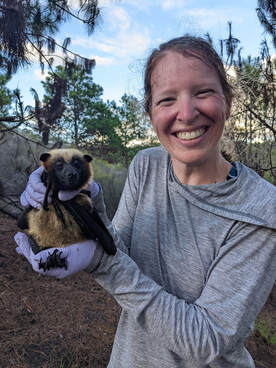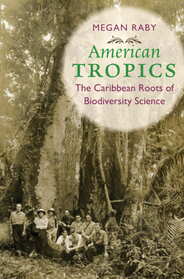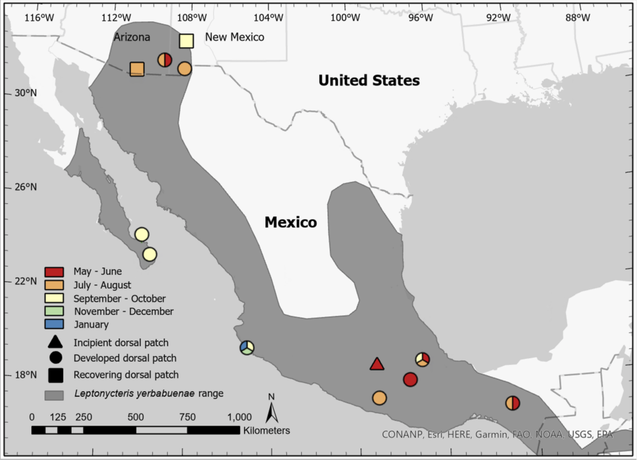|
I will be giving a talk at this year's joint International Bat Research Conference (IBRC) and North American Society for Bat Research (NASBR) meeting in Austin, TX. My talk is schedule for Monday, August 8th at 1pm Central Daylight Time and is entitled "Bad Omens or "Just Like Chickens": Perceptions of Bats Among a Namibian Pastoralist Community" as part of the "S4: How Does Human Dimensions Research Advance Bat Conservation?" session. A live Q&A session will occur at the meeting although questions/comments can be emailed to me at any time. The IBRC/NASBR 2022 program can be found here.
0 Comments
I am on my way to Madagascar again for the next 5 weeks! I am excited to be installing a passive integrated transponder (PIT) tag antenna system at a cave entrance for a Malagasy rousette (Rousettus madagascariensis) colony that members of the Brook Lab have studied for years. I'll then be joining the team in the field around Moramanga and around Ankarana Special Reserve to sample the Malagasy rousette, the Malagasy straw-colored fruit bat (Eidolon dupreanum), possibly Commerson's leaf-nosed bat (Macronycteris commersonii), and searching for a new Malagasy flying fox (Pteropus rufus) field site. Apologies if things quiet down here or I am difficult to reach until I return to the office in early July.
This academic year, several of my colleagues and I who serve on the UChicago Ecology and Evolution Diversity, Equity, and Inclusion (DEI) Committee organized an informal reading group on the history and legacy of colonialism in ecology. The goal of our reading group was to explore and understand how the historical context of the 18th and 19th centuries shaped the field of ecology, and how it has influenced its current practice. Over five sessions, we discussed four central themes: (1) the history of colonialism in tropical ecology, (2) western conservation and land grabs, (3) colonization and paradigms of knowledge, and (4) parachute science. We guided our discussion using Megan Raby’s book American Tropics: The Caribbean Roots of Biodiversity Science and complemented it with several papers covering specific topics. We hosted the journal club on Zoom and welcomed participants from University of Chicago's Ecology and Evolution Department and the Chicago Field Museum. We would love for these materials to be of use for other groups wanting to explore these themes, so please visit these links to our syllabus that also contains suggested discussion questions and to the reading material.
This month, my coauthors--Lise Aubry and Zhao Ma—and I received the 2022 outstanding publication award in the Department of Fish, Wildlife, and Conservation Biology from the dean's office in the Warner College of Natural Resources at Colorado State University for the paper: Aubry LM*, Laverty TM*, Ma Z*. 2021. Impacts of COVID-19 on ecology and evolutionary biology faculty the United States. Ecological Applications 31(2): e02265. DOI: 10.1002/eap.2265 * = equal lead contributions
To learn more about our findings, please visit the link to our paper above or to this press release in the Colorado State University Source. "In search of bachelorettes: Observations of male Leptonycteris yerbabuenae with dorsal patches across its range" was published as an early view article this week in Therya. This project came about after my observations of male Leptonycteris yerbabuenae with dorsal patches in New Mexico during the first field season of my postdoctoral position under the supervision of Kathryn Stoner. Feel free to email me if you need assistance accessing the paper. Abstract: The lesser long-nosed bat (Leptonycteris yerbabuenae) is a partially migratory, nectarivorous species that exhibits reproductive asynchrony across its range. Both migratory and resident populations of sexually active males of L. yerbabuenae may form an odoriferous dorsal patch during their mating season. This is created by smearing saliva, urogenital fluids, and anal secretions over the interscapular dorsal region with their feet. Dorsal patches are believed to influence female mate choice. We synthesized the sightings of male dorsal patches across the species’ range, including gathering new observations of male L. yerbabuenae with dorsal patches captured at the northern extent of their range and citing previously unreported observations that we obtained by contacting other researchers. We also conducted a literature review to include all previously documented records of male L. yerbabuenae presenting dorsal patches. We document the first observations of male L. yerbabuenae with dorsal patches in the southwestern United States. In the Big Hatchet Mountains in New Mexico, we captured 1 male with a developed dorsal patch (i. e., bare dorsal skin with sticky fur) on 25 July 2019 and two others on the night of 13 August 2019. New observations of males with developed dorsal patches were obtained from Hilltop Mine in Arizona (June 2006 or 2007) and at a hummingbird feeder at a residence near the Hilltop Mine (July 2013). A male with a recovering dorsal patch (i. e., bare dorsal skin with regenerating fur) was also captured in a roost near Patagonia, Arizona, in late August 2008 and at a hummingbird feeder at a residence near Silver City, New Mexico (September 2021). All previously published records of males with dorsal patches occurred in roosts in Mexico during known mating seasons. These new observations suggest that L. yerbabuenae may breed in New Mexico and Arizona between June and August, but follow-up studies are needed to confirm this behavior. Much of the reproductive biology of this important pollinator remains unknown. Therefore, identifying regions where males present dorsal patches may not only assist in locating and protecting mating roosts, but would also further our understanding of the population ecology of this migratory species.
|





